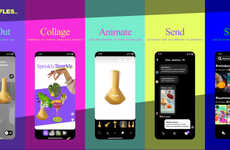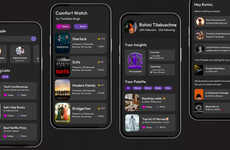
The 'Why is Pinterest So Addictive? Infographic' Tells the Truth
Harris Jay Rosenberg Alterman — March 26, 2012 — Social Media
References: flowtown & holykaw.alltop
The 'Why is Pinterest So Addictive? Infographic' explains why people are hooked on image sharing. Over the course of five months, Pinterest's monthly unique visitors grew over 866 percent from 1.68 million to 16.23 million. As the site continues to explode with popularity, one may begin to wonder why they simply cannot stopping pinning.
One of the reasons Pinterest is so addictive is because of its simple design. The pages are filled with pictures while comments and likes remain hidden. Another reason people can't stop pinning images is because it's easy. All one must do is click pin from their toolbar and instantly that image is uploaded to their page. Finally, unlike Facebook or Twitter, everyone's content is shown on the homepage allowing anyone to stumble upon it.
So why is Pinterest so addictive? It's a simple concept that is visually appealing and easy to use.
One of the reasons Pinterest is so addictive is because of its simple design. The pages are filled with pictures while comments and likes remain hidden. Another reason people can't stop pinning images is because it's easy. All one must do is click pin from their toolbar and instantly that image is uploaded to their page. Finally, unlike Facebook or Twitter, everyone's content is shown on the homepage allowing anyone to stumble upon it.
So why is Pinterest so addictive? It's a simple concept that is visually appealing and easy to use.
Trend Themes
1. Image-sharing Addiction - The rise of image-sharing addiction is an opportunity for businesses to create visually appealing platforms with easy-to-use interfaces.
2. Simplicity in Design - The demand for simplicity in design presents an opportunity for businesses to create visually pleasing and easy-to-navigate websites and apps.
3. Discoverability of Content - The emphasis on the discoverability of content presents an opportunity for businesses to develop platforms that easily promote and share content.
Industry Implications
1. Social Media - Social media platforms can leverage the addictive nature of image-sharing to bring in more users and increase engagement.
2. E-commerce - E-commerce businesses can create visually-pleasing product images that can be shared on image-sharing platforms to increase brand awareness and sales.
3. Marketing and Advertising - Marketing and advertising agencies can use image-sharing platforms to promote their content and increase visibility of their products and services.
2.2
Score
Popularity
Activity
Freshness























